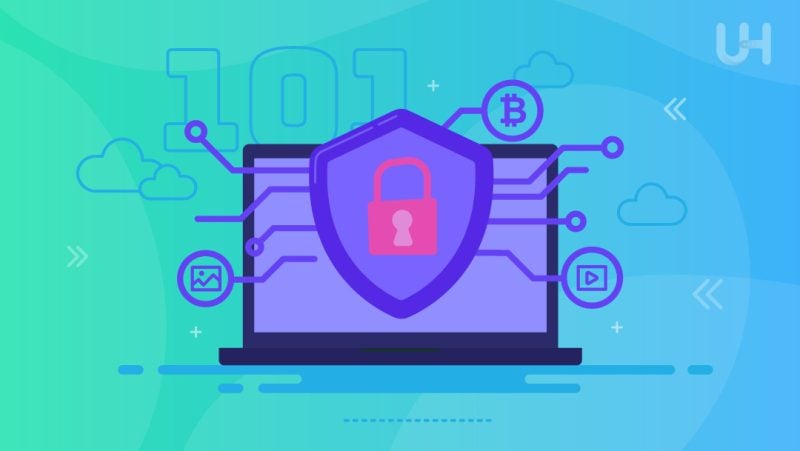According to the statistical data, with the estimated 16.5% growth of the digital asset market till 2027, the number of businesses is also expected to grow. However, such companies are at greater risk of losing their digital assets since they can easily be accessed and shared with others. For this, a practical security approach is considered necessary to protect a company’s digital assets.
From understanding the value of digital assets and their security, highlighting the best practices such as ZTNA solutions, and presenting real-world cases, this article encompasses essential topics to improve understanding of digital asset security.
The Value of Digital Assets in Modern Business
It is known that digital assets encompassing data, software, videos, logos, etc., are crucial for modern businesses since they help them grow and operate smoothly. These assets are a critical part of the companies since it allows them to connect to customers.
But it’s not just about appearance- these assets make things work better, such as supporting customers to have a great online experience and aiding organizational administration in making intelligent decisions using the relevant digital data. Also, digital assets are imperative since taking care of these assets allows businesses to create value, stay accessible, and stand out among their competitors.
Common Threats to Digital Assets
Cyber threats tend to damage digital assets’ integrity and cause disruptions in business operations. Based on the information available, some of the threats include:
- Cyber-attacks
- Data exposure
- Overload attacks
- Insider threats
- Trickery tactics
- Physical security
- Software vulnerabilities
- Third-party issues
- Malicious software
- Lack of awareness/ employee training
Some countries take these threats seriously. Cybersecurity in Singapore is a priority, and SMEs are encouraged to get free Cybersecurity Health Checks to identify vulnerabilities and strengthen their defenses.
Best Practices in Digital Asset Protection
Among many, the most effective strategy businesses use for asset protection is the implementation of Zero Trust Network Access (ZTNA) oriented practices. In addition to ZTNA practices, businesses are also prioritizing insider threat solutions to specifically counteract potential vulnerabilities from their own employees and associates. Some of the best practices that can effectively protect digital assets are:
- Prioritizing strong user authentication and device validation.
- Micro-segmentation of users.
- Granting users the minimal access necessary to perform their roles.
- Implementation of real-time monitoring of users.
- Defining and enforcing access policies based on user identity, role, device health, and other contextual factors.
- Securing remote access to users and devices.
- Regular auditing of user activities and access logs.
- Application of ZTNA framework for vendor access to digital assets.
- Data encryption.
- Development of a well-defined incident response plan.
As businesses evolve, the complexity of managing identities and access within vast digital ecosystems heightens. Implementing an effective IGA solution becomes crucial. These solutions aim to automate user access reviews, ensuring that sensitive information is safeguarded while maintaining compliance across applications. Just as Zero Trust practices redefine network security by continually verifying trust for assets, modernized IGA strategies enhance governance through fine-grained access controls focused on minimizing application risks.
Role of Employee Training and Awareness
The role of employee training and awareness in the protection of digital assets is imperative for modern-day businesses. The idea involves the development of employee training approaches aiming to help them understand the significance of data protection, identify the potential risks such as malware and phishing and respond adequately. To streamline and effectively plan these training programs, consider using human capital management software. These tools help arrange training schedules, track employee progress, and ensure ongoing compliance with data protection policies.
Also, training employees for the purpose of regulation compliance supports their adherence to organizational policies. Primarily, employee training and awareness form an essential defense mechanism for companies to protect digital assets and reduce the risk of data breaches. Recognizing and reinforcing this behavior through initiatives like employee appreciation day can boost morale and foster a culture of accountability and vigilance, making security awareness an ongoing, celebrated part of workplace culture.
Physical vs. Digital: Ensuring Complete Asset Security
We understand now that securing digital assets is crucial, but efforts must be made at physical as well as digital levels to secure the company’s digital assets completely. The available information presents the integration of an extensive approach into security protocols, such as encryption protocols, access controls, and rigorous employee training to strengthen data security.
Besides, the research encourages the use of physical security, such as secured facilities, controlled access, and surveillance, to further reduce the risks of physical breaches. It is believed that the diverse measures act as multi-faceted protection systems that ensure the security of digital assets like ecommerece websites or content marketing.
Backup and Recovery: Essential Strategies
In case of data risks and loss, an effective strategy for backup and recovery is crucial for businesses. Below are some of the essential strategies for businesses that can help them to have backup or recover:
- Regular Backups and Multiple Copies: Establish a consistent schedule to back up your important data at regular intervals and maintain duplicate copies.
- Prioritize Key Data: Focus on backing up the most critical and valuable files.
- Automate Backups: Simplify the process by setting up automatic backups.
- Encryption: Add an extra security layer by encrypting your backup files.
- Regular Monitoring: Periodic assessment of backup files and their integrity.
- Usage Guide: Maintain a user-friendly guide on how to use your backups effectively for seamless recovery.
Case Studies: How Leading Companies Protect Their Digital Treasures
Let’s look at some case studies where companies took major steps to safeguard their digital assets.
IBM
IBM, a global consulting and technology giant, makes use of a proactive strategy for protecting its assets through ZTNA. The approach integrates ZTNA and SASE (secure access service edge) into a single service model that has the ability to protect a digital business.
This allows IBM to authenticate and continuously validate all users inside or outside the organizational network before granting or keeping access.
Netflix
Netflix, a streaming service, reports to adopt a multi-layer and proactive security approach for its digital assets. This approach includes advanced data encryption techniques, a cloud security system to manage multiple-level traffic, real-time data monitoring and threat detection using tools such as Workflowable, sketchy, and Scumblr, and employee training using videos.
In addition, the business also collaborates with other businesses and shares useful insights for data protection and hence enjoys a key market position.
Evolving Your Strategy with Changing Digital Landscapes
Considering the dynamics of the digital landscape, this exploration suggests that businesses need to adapt effective security measures if they wish to efficiently protect their digital assets and continue the path of success.
Data security analysts believe that, like expert navigators who adjust sails to changing sea winds, businesses must modify their existing approaches based on changing digital trends. For some, this may involve seeking external guidance through technology consulting services to evaluate current systems and address emerging security or operational challenges.
Final Words
The exploration of existing information relevant to the security of digital assets affirms that the value of digital assets for modern businesses is crucial. The analysis recommends the implementation of best practices such as advanced protection approaches and employee training. Remember, this is not a choice; it’s a must thing to secure digital assets and hence modern business.








